Orthodontic services
Are you looking for an orthodontist in Cluj Napoca?
Ortho Implant Center Cluj provides you with orthodontists, who can help you solve dental anomalies and non-functional occlusions.
Orthodontics is the science that deals with the straightening of teeth, “ortho” meaning “straight” and “dontie” referring to teeth.
The orthodontist can treat various dental abnormalities with the help of orthodontic appliances, trying to align the teeth and restore the bite in a correct occlusion from a functional and aesthetic point of view.
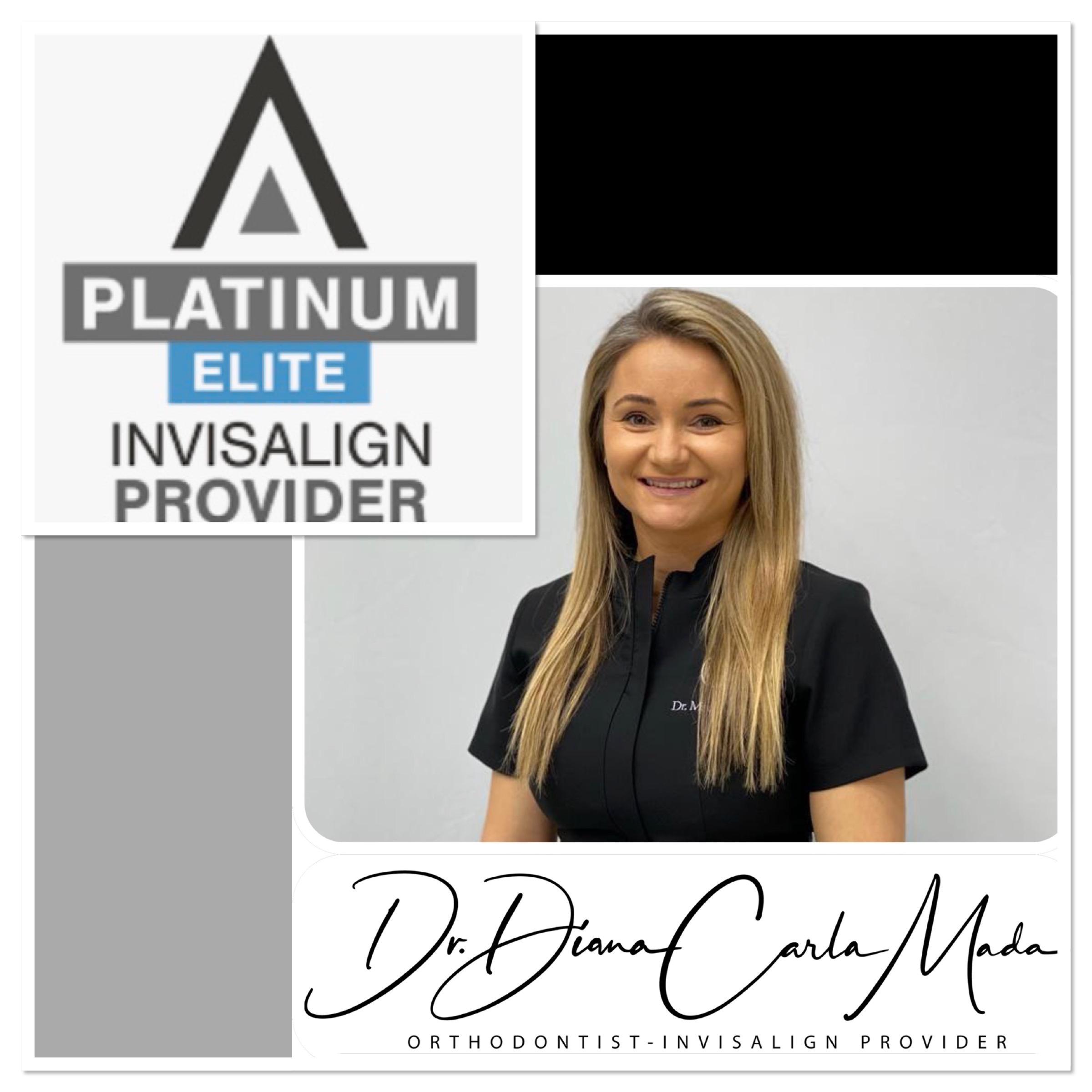
Recommendation
Orthodontic treatment can be applied at any age (children, adolescents, adults) and for various dental abnormalities, such as:
Intraarcadic abnormalities
dental congestion
dental spacers
Vertical anomalies
open occlusion
closed occlusion
Transverse anomalies
lingual occlusion
cross occlusion
deviated median line
Sagittal anomalies /
antero-posterior (A-P)
class II Angle
class III Angle
reverse gear
Complex cases
extraction
surgery
Types of dental appliances
The orthodontic appliances currently existing on the Cluj medical market, as in any other country, can be grouped in:
1. MOBILE ORTHODONTIC SYSTEMS – with ALIGNERS, where the leader on the world orthodontic market are those from INVISALIGN:
The device is different from traditional teeth straightening treatments, being without metal, without brackets, with a treatment plan made digitally and presented to the patient in a 3D version, to see exactly what the teeth will look like at the end of treatment, before he orders his device.
It consists of a set of aligners, specially made and individualised for each patient, depending on the abnomaly. These aligners are changed weekly or every 2 weeks, as directed by your orthodontist.
This digital treatment is much more accurate than a classic bracket treatment, it solves any dental disarmony faster than the traditional ones with braces, even many of the extraction or surgical cases.
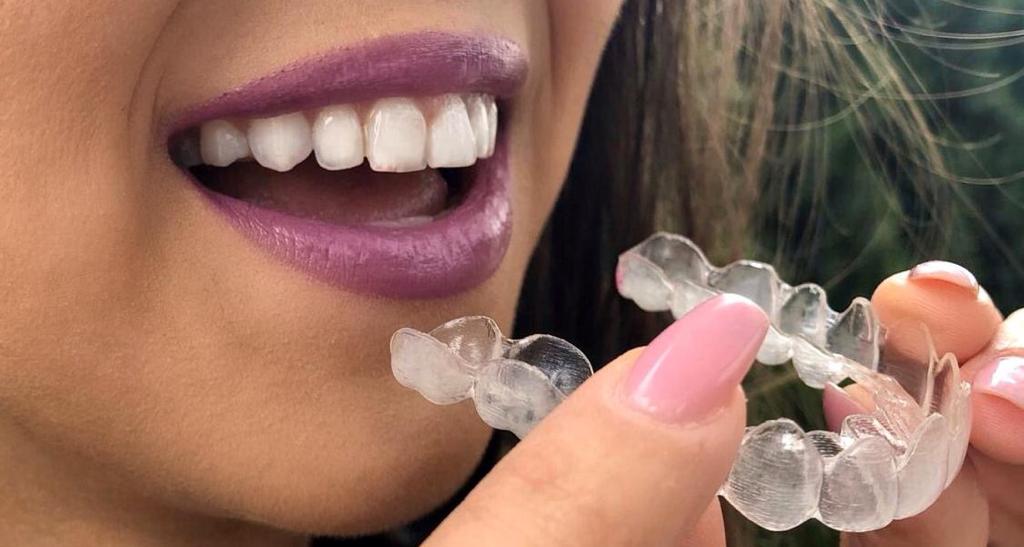

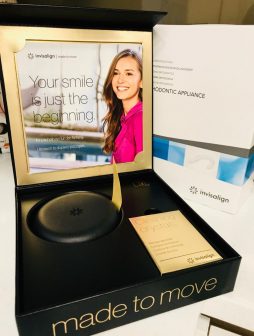
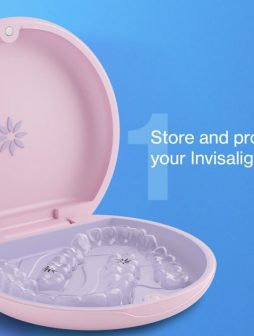
2.INVISALIGN FOR CHILDREN – INVISALIGN FIRST
It has a special category for small children, named Invisalign First and it starts from the age of 6 years old if necessary;
They can solve anomalies such as: open bite, deep bite, collapsed occlusion, cross bite, lingual bite, dental crowding, dental spacing, etc.
3. FIXED ORTHODONTIC DEVICES – bracket type
3.1. What is the procedure for orthodontic treatment with brackets, both in Cluj and in the rest of the countries?
– consultation, photographs and dental radiographs, ± study models, treatment plan;
– dental braces application;
– the average duration of orthodontic treatment is about 2.5 years, depending on the dental anomaly, the patient’s age, genetic baggage, eating habits, dental hygiene habits, etc .;
– the device is activated monthly (through visits to the dental clinic), almost throughout the treatment;
– there may be emergencies such as: detached bracket, broken bracket (if the food indications are not followed), the arch creates discomfort in the cheek or lips, all being resolvable by a visit to the dental clinic;
– hygiene must be done carefully, after each meal, with a soft toothbrush, interdental toothbrush and mouthwash;
– hard foods are forbidden (nuts, hazelnuts, toast, apple, popcorn, candies, etc. – they must be cut into slices); as well as vacuum foods (chewing gum, caramels, etc.)
3.2. What are the types of fixed braces?
Fixed appliances
non-physiognomic – with metal brackets – simple or self-ligating (which close through a flap and keep the same force on the tooth between activations, being more efficient than the classic device);
physiognomic – with ceramic, hybrid and sapphire brackets;
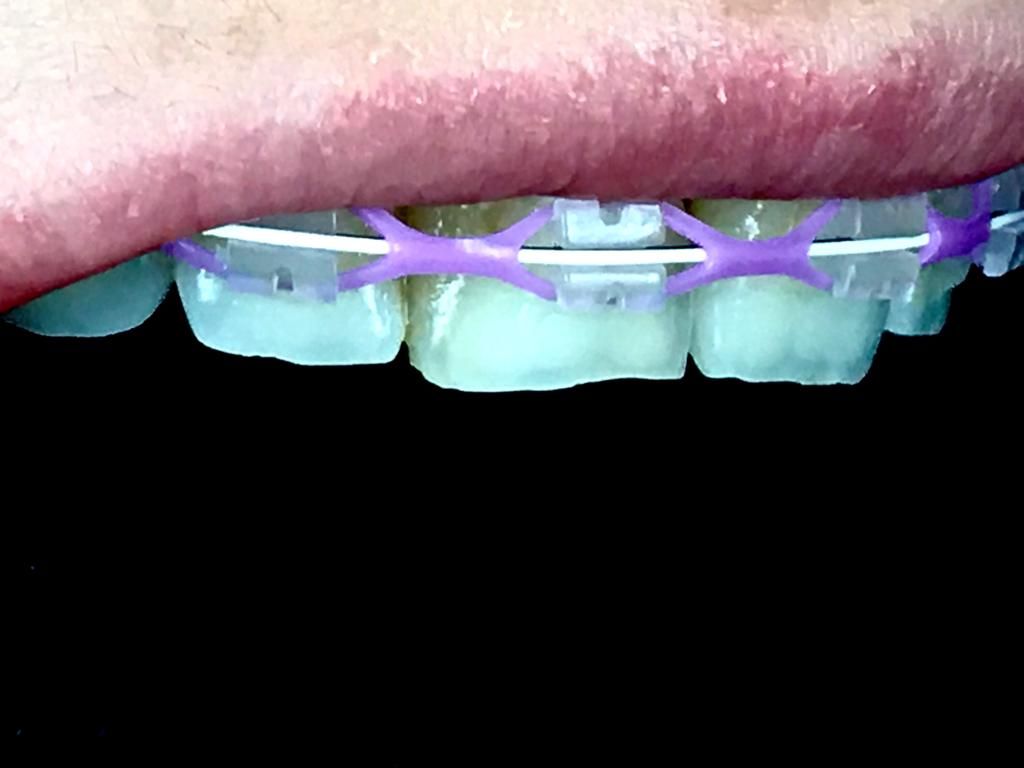
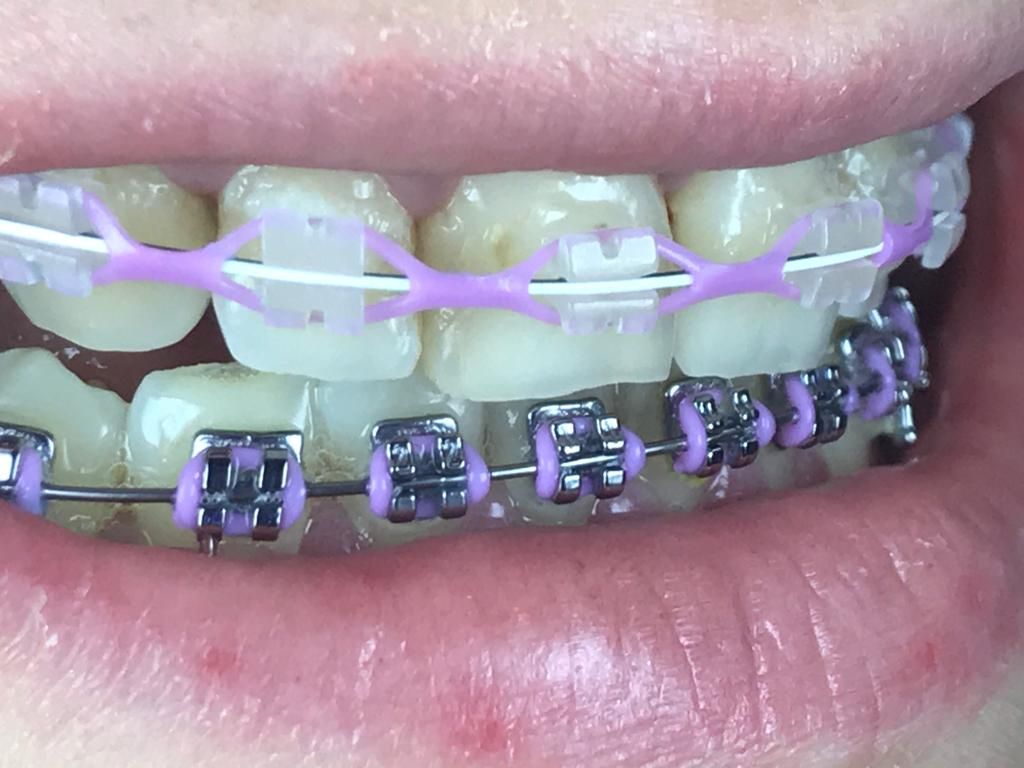
Examples of anomalies solved with brackets:
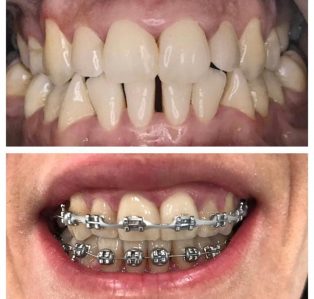
Fig.2 bimaxillary DDM with bilateral cross-occlusion – metal orthodontic appliance
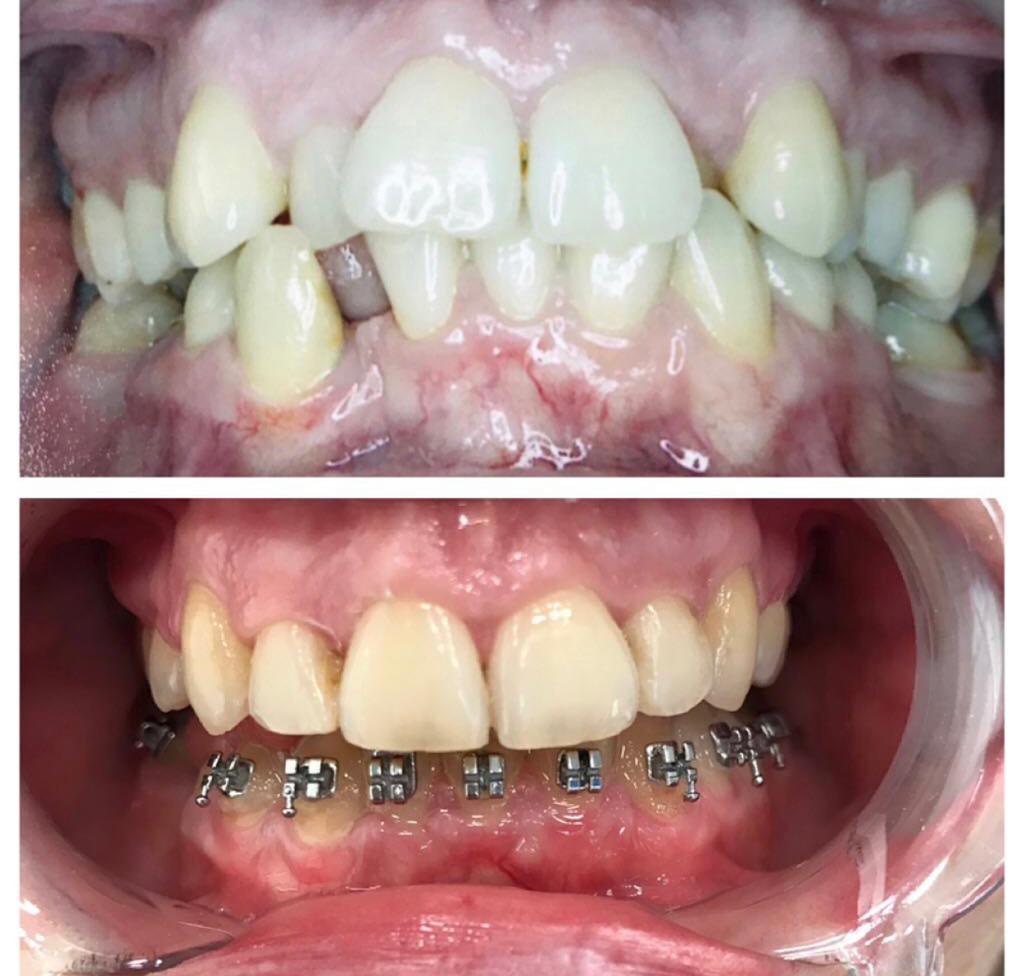
Fig.3 Collapsed occlusion and dental crowding – metal orthodontic appliance

FIG. 4 bimaxillary DDM with dental crowding and non-functional occlusion – physiognomic orthodontic appliance
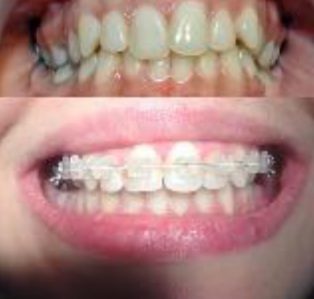
FIG. 5 Crowded DDM – physiognomic orthodontic appliance
Braces vs. Aligners:
| FAQS | ALIGNERE / GUTIERE | BRACKETSI |
|---|---|---|
| AESTHETIC | YES | NO (METALLIC), YES (PHYSIOLOGICAL), but they still have a metal spring, even if it is covered with white tape |
| PAIN | NO - slight tension, maximum 2 days | SOMETIMES - when changing the spring |
| FOOD RESTRICTIONS | NOT | YES - foods that can make a vacuum and hard foods (apple, bread crust, hazelnuts, nuts, etc.) are prohibited. |
| TREATMENT DURATION | 3 times less compared to a treatment with brackets; | About 2.5 years; |
| HYGIENE | It remains unchanged, and flossing can still be used; | Sanitation after each meal with a soft toothbrush, interdental toothbrush and mouthwash; |
With the help of brackets, almost all dental anomalies can be solved, although there is a certain limitation regarding the alignment, both as time and as a final solution of the case.
Given that we live in a digital world, alignment devices are much more accurate. In Cluj-Napoca you can find top treatments, starting from virtual planning, 3D scanning (fingerprint), and results calculated and expected from the beginning, much closer to the final result. The Invisalign aligners – is an ortho tool with many advantages over the traditional ones with brackets.
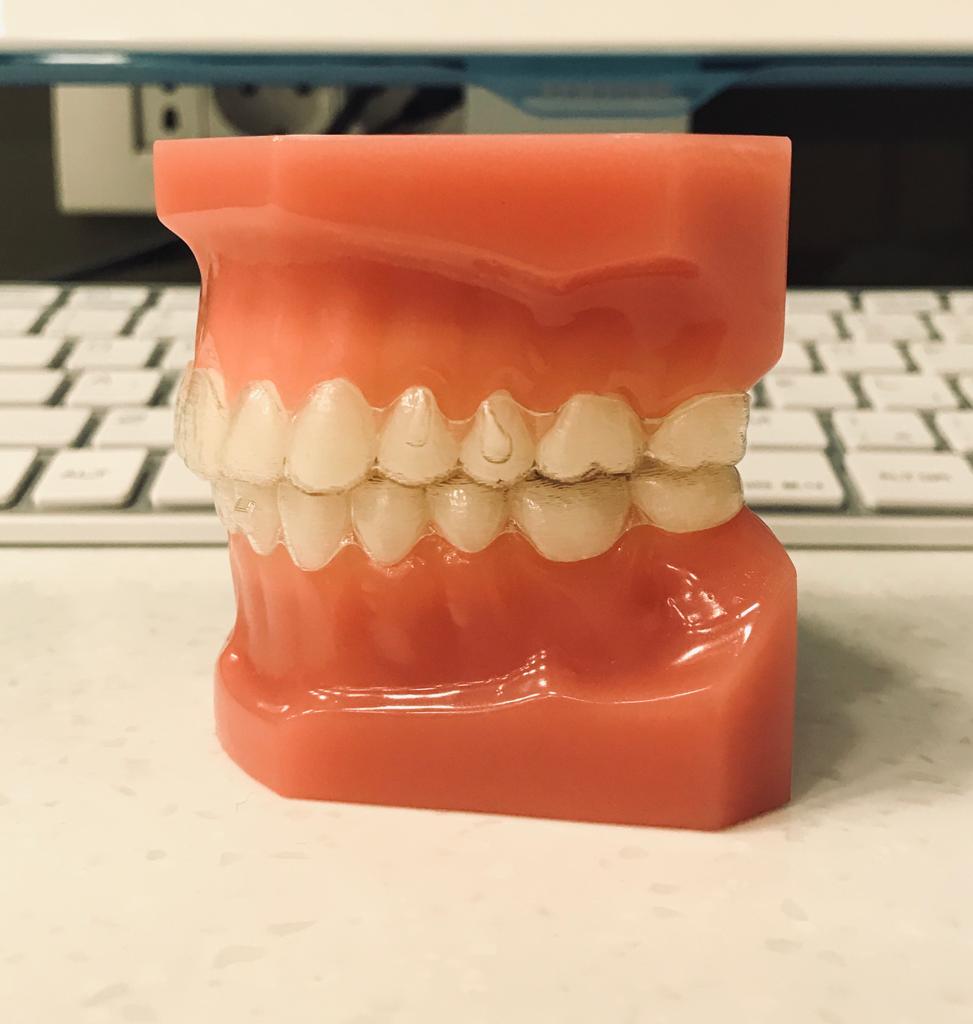
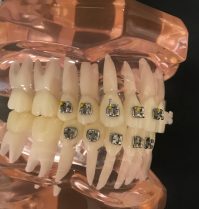
FIG. 6 Comparison between classic brackets and gutter / alignment devices
Frequently asked questions about the application of classic / traditional braces, with brackets:
Does it hurt when the device is applied?
It doesn’t hurt at all, because the appliance just sticks to your teeth with a special adhesive;
Do I need to take pain medication when I get home?
No, there will be only a slight tension at the dental level, which disappears in about 2 days;
Are there any marks left on the teeth after removing the appliance?
No, because the teeth are cleaned with brushes and / or fine rubber, for finishing;
Can I have white spots on my teeth after removing the appliance?
The white spots that can appear on the teeth are spots of demineralization of the enamel, which can appear around the brackets, ONLY if the hygiene is not good, that is if the teeth and the appliance are not sanitized at least in the morning and evening, correctly; as a result, white / chalky spots appear due to the fermentation of food scraps around the bracket;
How will I sanitize myself after I put on my braces?
Hygiene is indicated after each meal, so that no food residues remain on the appliance, which can lead to demineralization of the enamel, with a SOFT toothbrush, or specially designed for orthodontics + interdental toothbrush + mouthwash and / or mouthwash;
Do I have to come for a check-up every month?
Yes, it is checked monthly, and the doctor will activate the device, changing certain components, depending on the anomaly and the dental / bone response of each patient;
How long does a fixed dental treatment take?
The average wear of a dental appliance is about 2 years, depending on the dental anomaly, the patient’s age, the fact that he has worn a dental appliance in the past, etc.
Frequently asked questions about the application of gutters:
Does it hurt when the device is applied?
It does not hurt at all, because the device is mobile, it is removed by the patient and is not glued to the teeth, it stays on the teeth only by friction and by the fact that it is molded and individualized for each patient;
Do I need to take pain medication when I get home?
No, there will only be a slight tension at the dental level when the spout changes;
Are there any marks left on the teeth after removing the appliance?
No, because the teeth are cleaned with brushes and / or fine rubber, for finishing;
Can I have white spots on my teeth after removing the appliance?
No;
How will I sanitize myself after I put on my braces?
Hygiene is indicated after each meal, so that no food residues remain under the appliance, with a SOFT toothbrush, or an electric toothbrush + an interdental toothbrush + mouthwash and / or mouthwash, morning and evening;
Do I have to come for a check-up every month?
No, the doctor will tell you when the appointments are more important, but it usually comes at about 2-3 months for the check-up;
How long does a splint treatment last?
The average wearing of a dental appliance with splints is about 7 months -1 year, depending on the dental anomaly, the patient’s age, the fact that he has worn a dental appliance before or not, etc.
Conclusions:
Unlike fixed braces, brace / alignment braces require the absolute cooperation of the patient, but have many advantages, such as:
Fewer dental restorations before, during and after orthodontic treatment, shorter treatment time, improved comfort during treatment, preserved hygiene, unrestricted nutrition, aesthetic appearance far beyond bracket treatment;
Teeth with dental fillings (fillings) can be used as anchor teeth (support) for orthodontic treatment, regardless of which, if they correspond from a morphological point of view;
For anchor teeth used with the splint system, there are fewer carious lesions, compared to treatment with fixed braces;
The device is almost invisible (the one with splints), friends and acquaintances not noticing that you are in orthodontic treatment;
Impeccable hygiene;
Food kept, without any food restrictions; Increased self-confidence while wearing splints, there are no complexes and frustrations, especially in the case of adolescents, related to the teasing of others;
You can become your best option, without others noticing…. Except in the end! Do not hesitate!
Change your well-being in the best version of yourself! We are waiting for you…
Before & After – Invisalign full
Before & After – Invisalign full
Fixed metal device
Metal device – treatment stages
Before & After – Invisalign Dental Braces Cases
Before & After – Interdisciplinary treatment Invisalign sheet, veneers, crowns, table tops
Before – After after treatment with a fixed metal device
Before After Invisalign Full
Invisalign Full – surgical case solved without surgery and without extractions
Invisalign Lite – after 14 weeks of treatment
Invisalign Lite – treatment stage
Invisalign Full – surgical case solved without surgery and without extractions – treatment stage
Before After Invisalign Full
Before After Invisalign Full
Invisalign Full
Complex Treatment: Invisalign Full + Surgical + Prosthetic
Invisalign Full + prosthetic
Invisalign Full + Implant + Prosthetics
Invisalign Full
Invisalign Full
Invisalign 7
Invisalign Teen – for teenagers
Invisalign Full – recurrence after brackets
